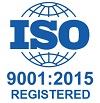With Effect From the Academic Year 2013-14
BIT 404
WIRELESS AND MOBILE COMMUNICATIONS
(ELECTIVE –II)
Instruction per Week 4 Periods
Duration of University Examination 3 Hours
University Examination 75 Marks
Sessional 25 Marks
UNIT –I
Introduction to Wireless Communication Systems: Evolution of Mobile Radio Communications,
Examples of Wireless Communication Systems. Modern Wireless Communication Systems : Second Generation (2G) Cellular Networks, Third Generation (3G) Wireless Networks, Wireless local Loop, Wireless Local Area Networks.The Cellular Concept: Introduction, Frequency Reuse, Channel Assignment Strategies, Handoff Strategies, Interference and Systems Capacity, Trunking and Grade of Service, Improving Coverage & Capacity in Cellular Systems.
UNIT –II
Mobile Radio Propagation : Large Scale - :Path Loss : Introduction to Radio Wave Propagation, Free Space Propagation Model, Three Basic Propagation Mechanisms, Reflection, Ground Reflection, Diffraction, Scattering, Outdoor Propagation Models, Indoor Propagation Models, Signal Penetration into Buildings.
UNIT –III
Modulation Techniques for Mobile Radio : Digital Modulation, Linear Modulation Techniques, Constant Envelop Modulation, Spread Spectrum Modulation Techniques.
UNIT –IV
Multiple Access Techniques for Wireless Communications : FDMA, TDMA, Spread Spectrum Multiple Access, Space Division Multiple Access, Capacity of Cellular Systems. Wireless Networking : Introduction, Difference between Wireless and Fixed Telephone Networks, Development of Wireless Networks. Wireless Systems and Standards: Global System for Mobile (GSM), GPRS, CDMA Digital Cellular Standard
UNIT –V
Mobile Network Layer: Mobile IP : Goals & Requirements, Terminology, IP Packet Delivery, Agent Advertisement & Discovery, Registration, Tunneling and Encapsulation, Optimizations, Reverse Tunneling. Dynamic Host Configuration protocol. Mobile Transport Layer: Traditional TCP, Snooping TCP, Mobile TCP, Fast Retransmit/Fast Recovery, Transmission/Time-Out Freezing, Selective retransmission, Transaction oriented TCP
Suggested Reading:
1) Theodore S. Rappaport, “Wireless Communications Principles and Practice”, 2nd Edition, Pearson Education, 2003.
2) Jochen Schiller, “Mobile Communication”, 2nd Edition, Pearson Education.



